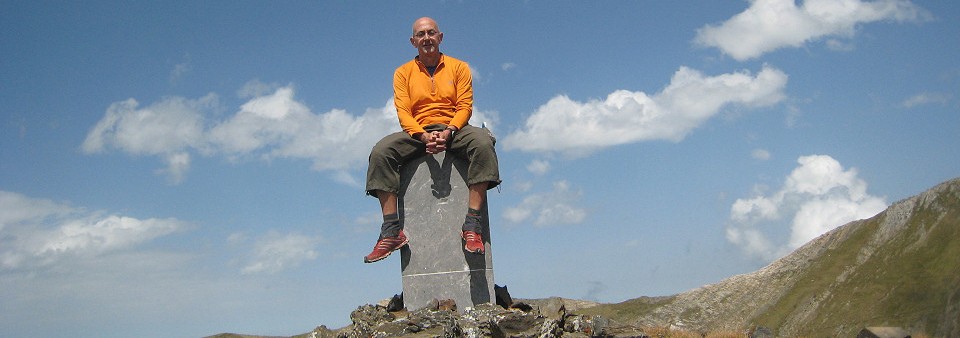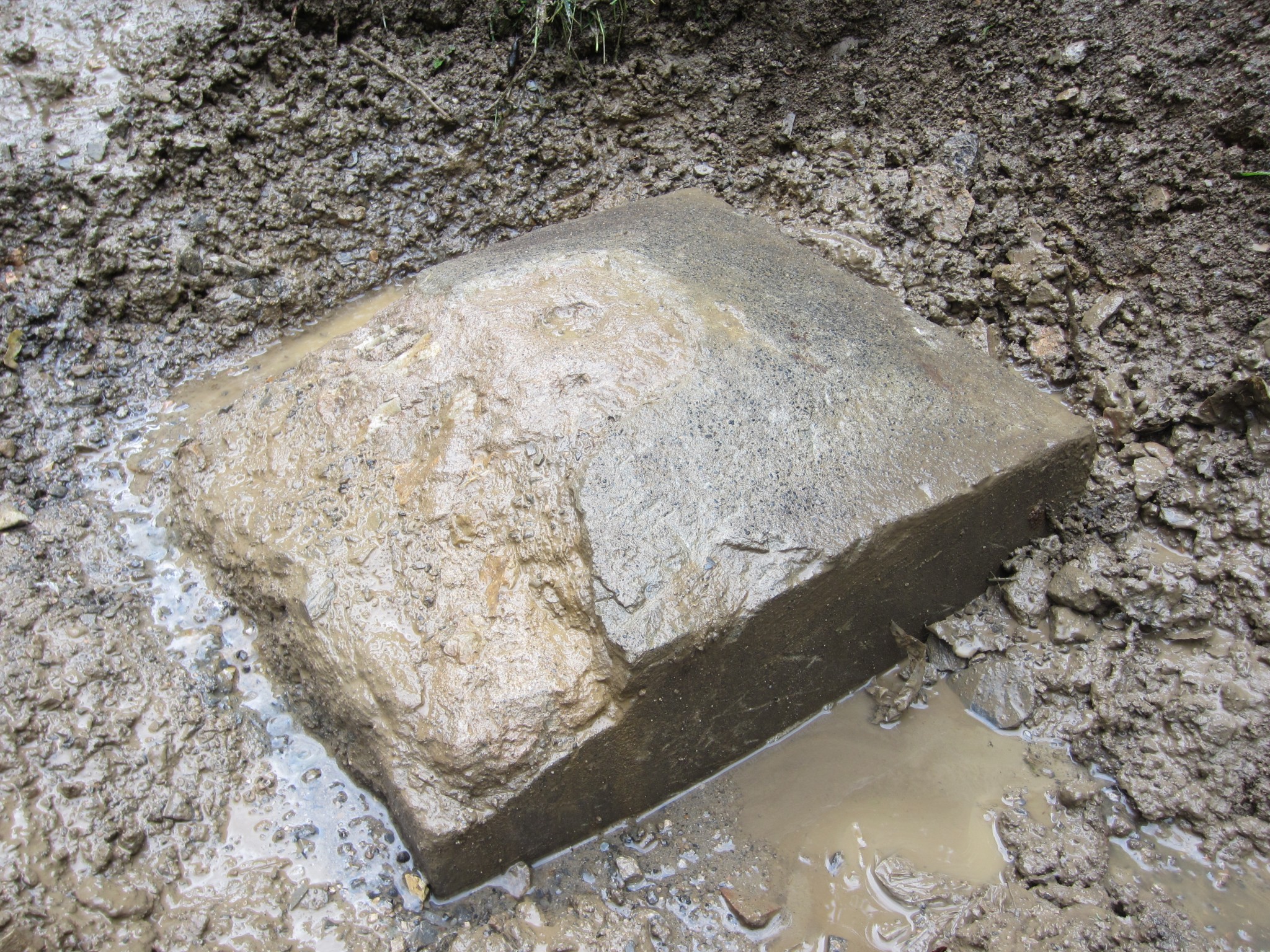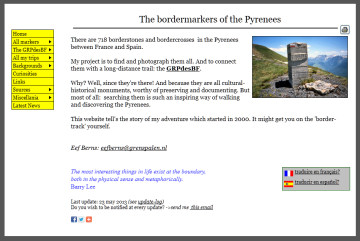It’s location is approximately 125m west of the borderline. Why? What went wrong in 1858 or 1859? Let’s first get a bird’s-eye view.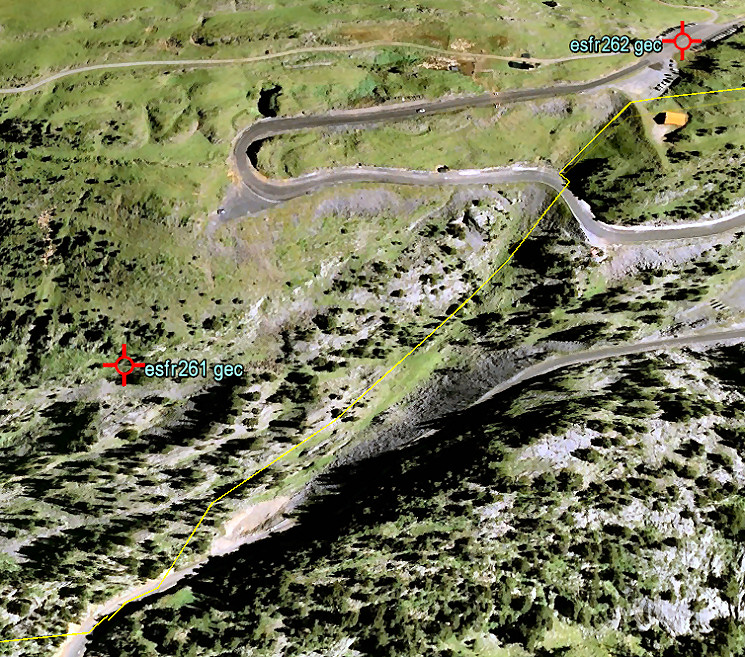
This is a screenprint from Google Earth. The yellow line is – approximately – the borderline as we find it on the French and Spanish maps. We have a confirmation of it actual position in this terrain by a newspaper-article which states that the site of the Marcel Loubens-cave was on the borderline but the entrance of the cave a few meters on French soil. Marcel Loubens was a famous French speleologist who died in 1952 in this cave: see this wikipedia article and my own esfr-html-trips-20100907.html
So the location of bm261 is a mystery but Jacques Koleck unshrouded some of its secrets by studying the archives. He wrote me in 2013: “The 261 cross surprises a little by his position slightly to the west. In the minutes of the “Commissions de vérification des bornes internationales” – which I found in the Archives Départementales of Pau – indicate that the location of the cross 261 was verified in 1859 – eight months after the signing of the Treaty – by delegates of the communities of Saint Engrace and Isaba and from 1862 onwards by the delegates of Aramits and Isaba who found “that all bordermarkers were in good condition and placed at the places indicated in the minutes of the demarcation of december 28, 1858.”
During the period 1862-1881 the bordermarker 261 however was each year subject to a protest from the town of Saint Engrace who felt that this bordermarker was on their territory. Then everything calmed down and the Aramits- and Isaba-representatives continued to meet every august 21 from 1911 to 1925 (later archives burned) coming to the same conclusion: “The bordermarkers are placed … on the places indicated in the minutes of the demarcation …. “.
But I still wonder about the meaning of the term “mobile bordermarker” that I found in the minutes of the Commission (1914, 1921 and 1923): “The delegates agreed that bordermarker 261, the only mobile bordermarker, is in good condition and at its original place … “. A bordermarkers is meant to be fixed and not to be mobile or to be move.”
By the way, bm261 is not the only esfr-bordermarker quite dislocated from the borderline. Another example is bm235: see http://www.grpdesbf.nl/esfr-html-markers-230-236.html
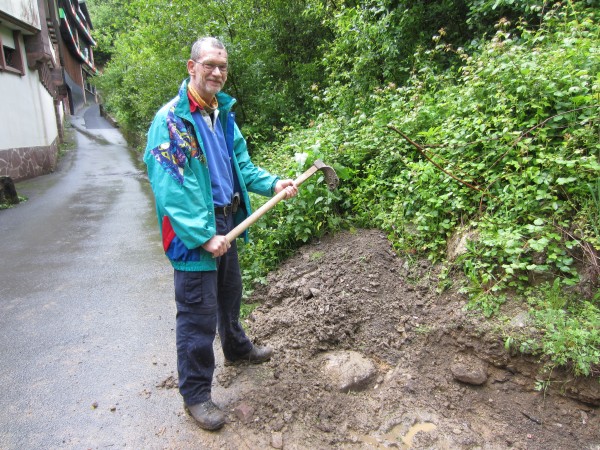 Today (31 may) was a special day: bm196 which was buried for fourty years, has been excavated by us.Together with Jan-Willem (each spring joyfully joining me on a bordermarker-trip), I undertook a last try to undig bm196. More about this engraved bordermarker on this page.
Today (31 may) was a special day: bm196 which was buried for fourty years, has been excavated by us.Together with Jan-Willem (each spring joyfully joining me on a bordermarker-trip), I undertook a last try to undig bm196. More about this engraved bordermarker on this page.